Situated in the heart of Plymouth harbour, Drake’s Island has hosted a military fortification since at least the Tudor period. Initially housing an artillery battery it was latter augmented by a larger garrison and during the Civil War the island played a key role in ensure Plymouth held out against Royalist attack.
The first fortification on Drake’s Island was commissioned in the mid–sixteenth century as a result of war with France. A stone and turf wall was built capping the island and a garrison was installed in 1551 but in the 1580s, following disagreements between the people of Plymouth and the Government over who was responsible for paying for the defence of the island, it was taken into state ownership. By the 1590s the fortifications on the island had been strengthened. A garrison of 100 men and 40-50 guns had been installed and by 1599 this had been increased further as war with Spain continued.
Following the restoration of the monarchy after the Civil War and subsequent Commonwealth, the island was used as a prison for notable Parliamentary prisoners. Major General John Lambert, would be successor to Oliver Cromwell, was held here from 1670-84. Also incarcerated here was Colonel Robert Lilburn, one of the regicides.
The defences on the island were largely neglected until the late eighteenth century. Intermittent war with France(and later in the century Spain) led to various small scale constructions such as magazines and the armaments of the island were periodically updated.
The defences visible today largely date from the mid-nineteenth century when the large casemates were constructed complete with supporting magazines and accommodation. Finally the Island was garrisoned by just under 500 soldiers for much of WW2 supporting coastal defence and anti-air operations.
The first fortification on Drake’s Island was commissioned in the mid–sixteenth century as a result of war with France. A stone and turf wall was built capping the island and a garrison was installed in 1551 but in the 1580s, following disagreements between the people of Plymouth and the Government over who was responsible for paying for the defence of the island, it was taken into state ownership. By the 1590s the fortifications on the island had been strengthened. A garrison of 100 men and 40-50 guns had been installed and by 1599 this had been increased further as war with Spain continued.
Following the restoration of the monarchy after the Civil War and subsequent Commonwealth, the island was used as a prison for notable Parliamentary prisoners. Major General John Lambert, would be successor to Oliver Cromwell, was held here from 1670-84. Also incarcerated here was Colonel Robert Lilburn, one of the regicides.
The defences on the island were largely neglected until the late eighteenth century. Intermittent war with France(and later in the century Spain) led to various small scale constructions such as magazines and the armaments of the island were periodically updated.
The defences visible today largely date from the mid-nineteenth century when the large casemates were constructed complete with supporting magazines and accommodation. Finally the Island was garrisoned by just under 500 soldiers for much of WW2 supporting coastal defence and anti-air operations.
Attachments
-
 C5E35B12-2C69-4F4C-AAAB-40113A70CB26.jpeg310.2 KB · Views: 219
C5E35B12-2C69-4F4C-AAAB-40113A70CB26.jpeg310.2 KB · Views: 219 -
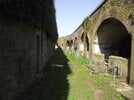 5FBF8656-BE48-40AE-B5E0-875E6B71805F.jpeg101.3 KB · Views: 174
5FBF8656-BE48-40AE-B5E0-875E6B71805F.jpeg101.3 KB · Views: 174 -
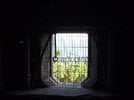 343E0AD1-E140-46F2-99FB-4CC0F977CAB4.jpeg50.3 KB · Views: 175
343E0AD1-E140-46F2-99FB-4CC0F977CAB4.jpeg50.3 KB · Views: 175 -
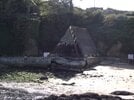 A77FE947-8C41-42EF-96CF-5B5D236CE0F3.jpeg99.3 KB · Views: 161
A77FE947-8C41-42EF-96CF-5B5D236CE0F3.jpeg99.3 KB · Views: 161 -
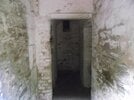 DBE2E80B-22A1-45BB-901E-644F2FCD4B14.jpeg60.8 KB · Views: 167
DBE2E80B-22A1-45BB-901E-644F2FCD4B14.jpeg60.8 KB · Views: 167 -
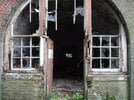 F4ED0E0C-B4AF-4FF0-B467-78BEA4486536.jpeg113.8 KB · Views: 171
F4ED0E0C-B4AF-4FF0-B467-78BEA4486536.jpeg113.8 KB · Views: 171 -
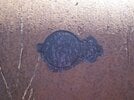 C744C0F5-2EB1-4F73-BE1D-757600CD0869.jpeg115.8 KB · Views: 166
C744C0F5-2EB1-4F73-BE1D-757600CD0869.jpeg115.8 KB · Views: 166 -
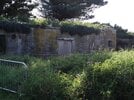 CBDEFEEC-21A7-4692-9557-571908675899.jpeg127.3 KB · Views: 164
CBDEFEEC-21A7-4692-9557-571908675899.jpeg127.3 KB · Views: 164 -
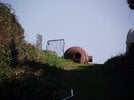 A29C165B-DBAD-40E2-BD48-AB6A7B8D6976.jpeg58.9 KB · Views: 172
A29C165B-DBAD-40E2-BD48-AB6A7B8D6976.jpeg58.9 KB · Views: 172 -
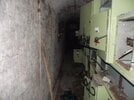 F850B385-02CE-4B64-AD19-D8795A012FCC.jpeg66.6 KB · Views: 159
F850B385-02CE-4B64-AD19-D8795A012FCC.jpeg66.6 KB · Views: 159 -
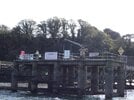 20205E4F-F5A4-45B8-BC33-6B749B5D9272.jpeg87.6 KB · Views: 163
20205E4F-F5A4-45B8-BC33-6B749B5D9272.jpeg87.6 KB · Views: 163 -
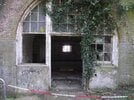 268CFC2A-56DF-4D18-A1F1-8D7EBC3580C8.jpeg118.8 KB · Views: 160
268CFC2A-56DF-4D18-A1F1-8D7EBC3580C8.jpeg118.8 KB · Views: 160 -
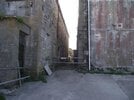 ABAC4383-0270-4AD5-9C7D-439310451604.jpeg78.6 KB · Views: 174
ABAC4383-0270-4AD5-9C7D-439310451604.jpeg78.6 KB · Views: 174 -
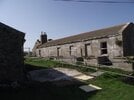 6A1E19C5-95DD-41A8-814C-5D491142B71C.jpeg70 KB · Views: 166
6A1E19C5-95DD-41A8-814C-5D491142B71C.jpeg70 KB · Views: 166 -
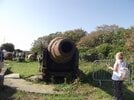 4154FA24-86C4-48FF-853B-DBF9C2A5EEDE.jpeg112 KB · Views: 161
4154FA24-86C4-48FF-853B-DBF9C2A5EEDE.jpeg112 KB · Views: 161 -
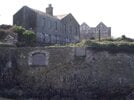 67664E7F-0617-4040-BE8C-6C2D6346C9DC.jpeg78 KB · Views: 161
67664E7F-0617-4040-BE8C-6C2D6346C9DC.jpeg78 KB · Views: 161 -
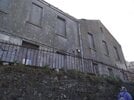 6F286F0D-BAA2-4874-A5F9-98694FC3C76D.jpeg90 KB · Views: 166
6F286F0D-BAA2-4874-A5F9-98694FC3C76D.jpeg90 KB · Views: 166 -
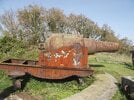 6235024C-72EE-4168-9314-DBBB9D08DB84.jpeg147.5 KB · Views: 160
6235024C-72EE-4168-9314-DBBB9D08DB84.jpeg147.5 KB · Views: 160 -
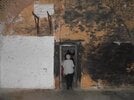 DEA57AE8-3420-4FF5-BF1B-6CE36A85E7D1.jpeg78.4 KB · Views: 159
DEA57AE8-3420-4FF5-BF1B-6CE36A85E7D1.jpeg78.4 KB · Views: 159 -
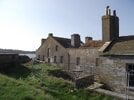 A2FF46B2-4A2E-4603-B2BC-D2BDA5ED5FF3.jpeg77.8 KB · Views: 157
A2FF46B2-4A2E-4603-B2BC-D2BDA5ED5FF3.jpeg77.8 KB · Views: 157 -
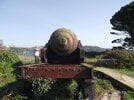 4C5F5C36-C47B-4672-AD70-AF18A351E7EC.jpeg97 KB · Views: 157
4C5F5C36-C47B-4672-AD70-AF18A351E7EC.jpeg97 KB · Views: 157 -
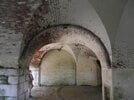 54C35F8A-9225-4E9F-85BB-CC1D95611409.jpeg78.1 KB · Views: 161
54C35F8A-9225-4E9F-85BB-CC1D95611409.jpeg78.1 KB · Views: 161 -
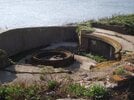 25D0CA73-938F-4CB3-9910-92FA5564A6D4.jpeg112.4 KB · Views: 161
25D0CA73-938F-4CB3-9910-92FA5564A6D4.jpeg112.4 KB · Views: 161 -
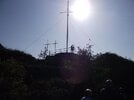 46179022-D89E-42E8-AEAC-F7367EF18B0B.jpeg45.9 KB · Views: 159
46179022-D89E-42E8-AEAC-F7367EF18B0B.jpeg45.9 KB · Views: 159 -
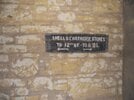 CD44E168-06F7-4B5A-8C68-8EFF077A00D7.jpeg65 KB · Views: 161
CD44E168-06F7-4B5A-8C68-8EFF077A00D7.jpeg65 KB · Views: 161 -
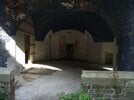 F76D7416-B774-423E-A792-F761487AD84B.jpeg74.1 KB · Views: 156
F76D7416-B774-423E-A792-F761487AD84B.jpeg74.1 KB · Views: 156 -
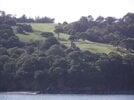 5E911611-7A32-4395-818E-0F9FC60CDFE3.jpeg66.6 KB · Views: 149
5E911611-7A32-4395-818E-0F9FC60CDFE3.jpeg66.6 KB · Views: 149 -
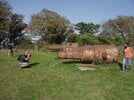 AA050AE2-682B-4BB3-BBEE-E64E66A47016.jpeg128.4 KB · Views: 167
AA050AE2-682B-4BB3-BBEE-E64E66A47016.jpeg128.4 KB · Views: 167 -
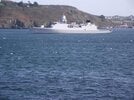 C7B33C1F-206F-4127-BDFB-B9B741CF1C87.jpeg101.4 KB · Views: 163
C7B33C1F-206F-4127-BDFB-B9B741CF1C87.jpeg101.4 KB · Views: 163 -
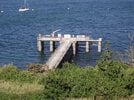 4FC1C09E-EF9D-488E-AB8B-DC9CE63E03E8.jpeg141.2 KB · Views: 160
4FC1C09E-EF9D-488E-AB8B-DC9CE63E03E8.jpeg141.2 KB · Views: 160


